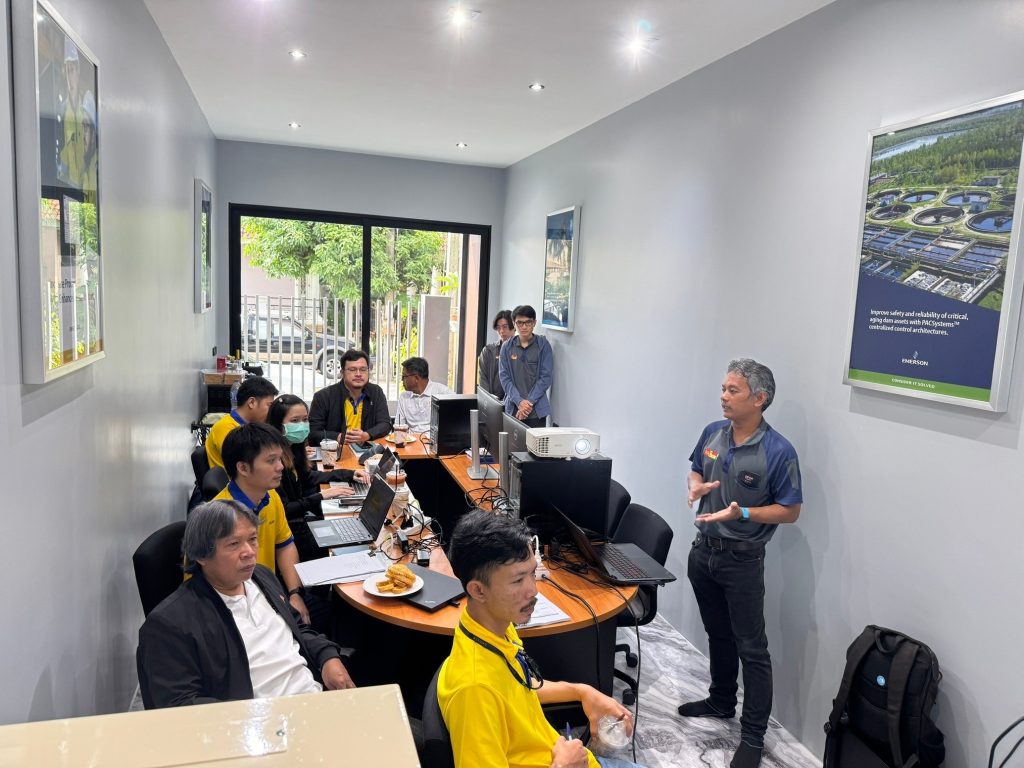
In today’s digital era, the field of Automatic Control Systems has undergone rapid advancements. Power plants, as critical infrastructures of national energy security, must adapt to these changes in order to ensure stability, reliability, and safety of power supply. One of the mechanisms that facilitates knowledge development among engineers, operators, and researchers is the use of News & Blog platforms.
These platforms play an essential role in disseminating information, technical updates, case studies, and best practices. Particularly, they are highly relevant in the domains of power plants, remote control systems, and automatic voltage regulators (AVR) where technological adaptation and continuous knowledge transfer are crucial.

1. Automatic Control Systems
1.1 Technology Updates :-
Continuous access to technical news enables engineers to adopt new concepts such as Digital Twins, Smart Grids, IoT integration, and AI-based control strategies, which enhance the performance and reliability of control systems.
1.2 Learning from Case Studies :-
Blogs often report real-world incidents, including system failures and recovery strategies in power plant operations. Such cases provide invaluable lessons that extend beyond conventional textbooks.
1.3 Compliance with Standards :-
News and technical articles frequently highlight updates to international standards such as IEC, IEEE, and ISO, which serve as guidelines for design and operational practices in modern power systems.
2. Power Plants

2.1 Knowledge Management :-
Technical blogs serve as repositories of organizational knowledge, preserving best practices and facilitating training for new engineers.
2.2 Organizational Credibility :-
Power plants that regularly publish engineering-related blogs and articles demonstrate their technical capability, innovation, and reliability to stakeholders and investors.
2.3 Professional Networking :-
Blogs and technical news create opportunities for knowledge exchange within the energy engineering community, fostering collaboration and joint research initiatives.
3. Relevance of News & Blog in Remote Control Systems
3.1 Cybersecurity Awareness :-
Remote control systems are critical targets for cyber threats. News updates and expert blogs provide awareness of emerging vulnerabilities and offer practical defense strategies.
3.2 IoT and Smart Grid Integration :-
Blogs frequently introduce innovative concepts for integrating remote monitoring with IoT and Smart Grid technologies, leading to enhanced performance, predictive maintenance, and operational safety.


4. Automatic Voltage Regulators (AVR)
4.1 Performance Improvement :-
Technical reports and blogs present new methodologies for improving AVR performance, such as AI-based adaptive voltage control to ensure system stability and minimize disturbances.
4.2 Failure Prevention :-
Case studies documenting AVR malfunctions—such as overvoltage, undervoltage, or hunting—help engineers anticipate similar failures and design preventive measures.
Integration of Automatic Control Systems in Power Plants :
The Role of Hardware and Remote I/O Modules
Hardware Infrastructure
The central element of the system is the Programmable Logic Controller (PLC), which functions as the decision-making and control unit. Supporting this are Remote I/O Modules, used to connect field devices such as valves, motors, and pressure transmitters. Communication is typically achieved through industrial protocols such as Ethernet/IP, Profibus, or Modbus TCP/IP, ensuring accurate and real-time data transmission.
Field Implementation Challenges
Site surveys and commissioning activities are essential to properly position control cabinets, manage cable routing, and mitigate electrical noise that can affect data accuracy. System Outcomes A well-designed ACS enables remote monitoring of equipment, reduces maintenance costs, and enhances workplace safety within the power plant.
System Outcomes
A well-designed ACS enables remote monitoring of equipment, reduces maintenance costs, and enhances workplace safety within the power plant.

Software and SCADA Systems :
The Central Hub for Monitoring and Control in Power Plants

SCADA–PLC Integration
SCADA gathers data from PLCs and Remote I/O Modules via industrial networks and displays it through Human Machine Interfaces (HMIs), providing engineers with intuitive operational dashboards.
Historical Data Management
Beyond real-time monitoring, SCADA systems store historical data in Historian Databases, allowing engineers to conduct trend analysis, performance assessment, and predictive fault detection.
System Planning and Coordination
Prior to deployment, structured planning meetings are conducted among Control Engineers, IT Specialists, and Operations Engineers to design the network architecture, configure user access levels, and implement cybersecurity measures.

Designing Remote Control Systems in Power Plants :
Best Practices and Field Experience
Design Principles
- Selection of suitable communication protocols (e.g., IEC 61850, DNP3, Modbus TCP)
- Implementation of redundant architectures in both networking and hardware layers to minimize downtime.
- Development of HMIs based on Human Factors Engineering principles for operational efficiency.
Project Execution Steps
● Site Survey – assessing infrastructure readiness.
● Design Engineering – preparing electrical drawings and control logic schematics.
● Project Planning Meetings – conducting kick-off sessions and progress reviews to align stakeholders.
● System Testing – performing Factory Acceptance Tests (FAT) and Site Acceptance Tests (SAT) to validate functionality.
Lessons from Field Experience
Miscommunication between engineering teams and end users is a common challenge. Continuous stakeholder engagement and structured meetings are vital to ensure project alignment and success.
📑 References
1. Bolton, W. (2015). Programmable Logic Controllers. Elsevier.
2. National Instruments. (2021). Introduction to Industrial Control Systems.
3. Siemens AG. (2020). Remote I/O Systems in Power Plants.
4. Boyer, S. (2010). SCADA: Supervisory Control and Data Acquisition. ISA.
5. ABB Group. (2019). SCADA in Power Plant Automation.
6. International Electrotechnical Commission (IEC). (2016). IEC 60870 and IEC 61850 Standards.
7. IEEE Power & Energy Society. (2018). Remote Control Systems in Power Generation.
8. Rockwell Automation. (2020). Design Considerations for Remote I/O and Control Systems.
9. IEC (2016). IEC 61850 Standard for Power Utility Automation.
Lorem ipsum dolor sit amet, consectetur adipiscing elit. Ut elit tellus, luctus nec ullamcorper mattis, pulvinar dapibus leo.
